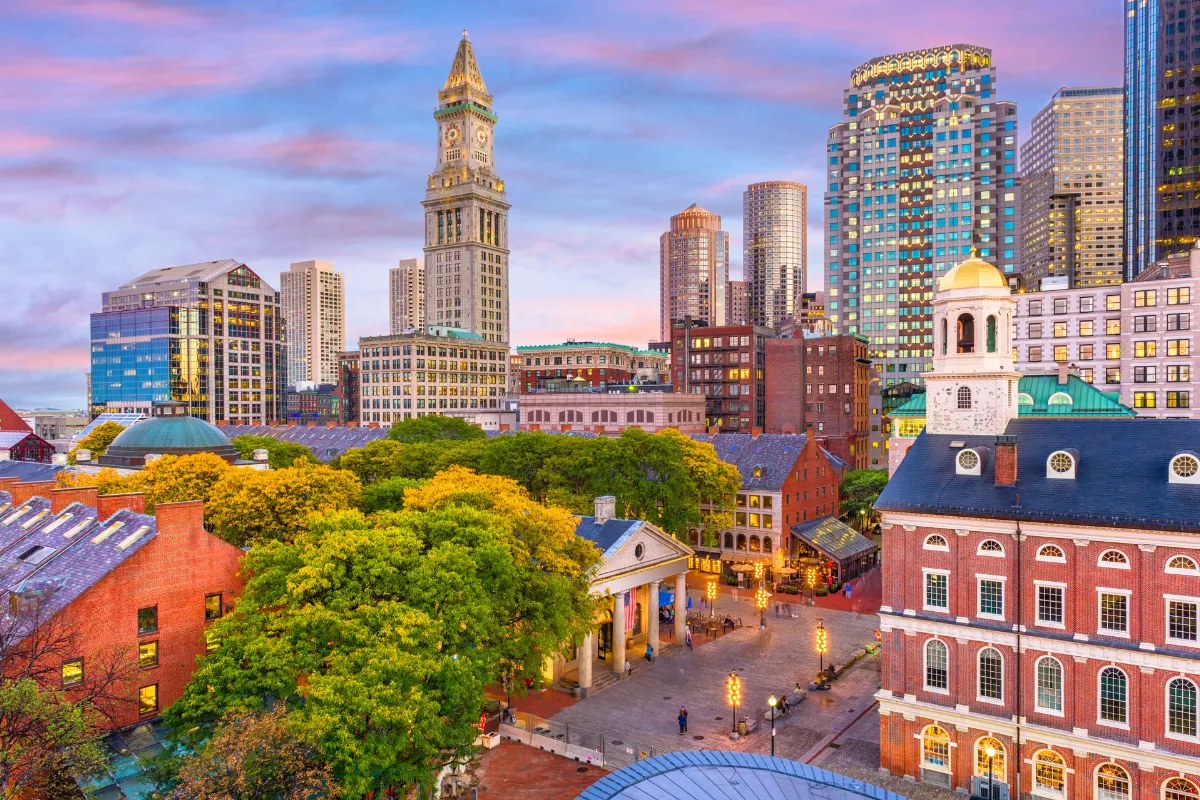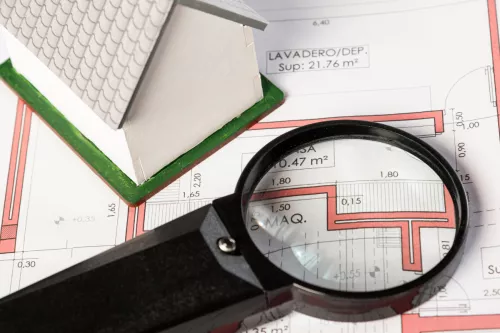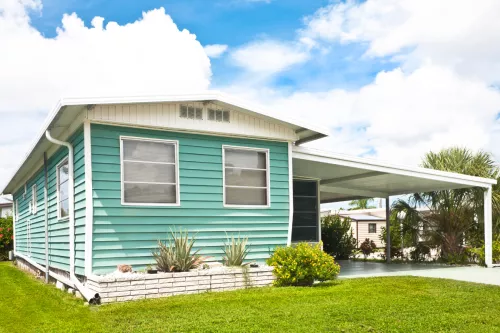Boston, Massachusetts, one of the oldest cities in the U.S., offers a rich tapestry of architectural styles from Colonial to contemporary, mirroring its deep historical roots dating back to the 1600s. The city's history is alive from the Freedom Trail and sites from the American Revolution.
Boston's neighborhoods boast high walkability, with luxury homes close to shops, restaurants, and cultural events, not to mention the scenic Boston Harbor and Boston Common. The city's tangled streets, from waterfronts to cobblestone paths lined with historic New England architecture, present a blend of past and present that captivates residents and visitors alike.
Whether you're a history buff, outdoor enthusiast, or someone looking to soak in vibrant culture, Boston offers diverse house styles and a living experience rich in history and modern amenities. As you consider buying a home in Boston, explore the architectural diversity that makes this city unique.
Popular Home Styles in Boston
Let’s go through the most popular home styles in Boston and get a little more familiar with its architecture:
Federal

The Federal style, popular in Boston from the late 18th to early 19th centuries, reflects the aspirations of a young America, emphasizing symmetry and classical ideals. Characterized by its elegant proportions, Federal homes often feature elliptical or fan-shaped windows, a decorative crown or roofline, and sidelights flanking the front door. This style is especially prevalent in Boston's Beacon Hill neighborhood.
Queen Anne

Queen Anne architecture, part of the Victorian era's creative expression, became popular in Boston in the late 19th century. These homes are known for their ornate detailing, asymmetrical facades, and expansive porches. Key features include turrets, patterned shingles, and multi-textured wall surfaces, providing a distinctively whimsical and elaborate appearance.
Second Empire

The Second Empire style, recognizable by its mansard roof, became fashionable in Boston during the mid-to-late 19th century. These buildings often feature dormer windows protruding from the steep, sloped roof, large bay windows, and ornate moldings. This style exudes a sense of grandeur and formality, seen in several restored buildings throughout the city.
Cape Cod

The Cape Cod style, originating from early colonial New England, is simple and symmetrical with a steep roof, central door, and multi-paned, double-hung windows. Traditionally, these homes are modest, one to one-and-a-half stories, featuring a central chimney and shingle siding, reflecting the pragmatic needs of the region's early settlers.
Italianate

The Italianate style emerged in Boston around the mid-19th century, inspired by the villas of Italy. These homes are characterized by their low-pitched or flat roofs, wide eaves with decorative brackets, and tall, narrow windows. The style is often seen in Boston's older neighborhoods, adding a touch of European elegance to the streetscapes.
Contemporary

Contemporary architecture in Boston showcases modern design principles, including clean lines, open layouts, and large expanses of glass that allow for natural light and views. These homes often incorporate sustainable and eco-friendly technologies, reflecting current trends towards energy efficiency and environmental care.
Colonial Revival

Colonial Revival architecture became popular in the early 20th century as a celebration of American colonial heritage. These homes feature a symmetrical facade, multi-pane, double-hung windows with shutters, and columns or pilasters framing the front door. This style is prevalent in Boston's suburban neighborhoods, offering a nostalgic return to the city’s architectural roots.
Tudor Revival

Tudor Revival homes, popular from the late 19th to mid-20th century, are inspired by the medieval homes of England, featuring steeply pitched roofs, decorative half-timbering, and tall, narrow windows. In Boston, these homes are often found in more affluent areas, providing a dramatic, old-world aesthetic contrasted with lush modern landscaping.
Ranch

The Ranch style, which became popular in the mid-20th century, is known for its long, low ground-hugging profile, and minimal exterior decoration. It typically features an open layout, large windows, and an attached garage, catering to a lifestyle that values simplicity and functionality.
Split Level

Split Level homes, a variation of Ranch-style homes, became popular in the mid-20th century. These homes feature a staggered floor plan, dividing living spaces into separate levels connected by short flights of stairs. This design allows for efficient use of space and separation of living areas, common in Boston’s suburban communities.
Common Types of Buildings in Boston
Boston's architectural landscape is a dynamic blend of historical grandeur and modern innovation, making it a unique urban environment. This diversity is not only evident in residential styles but also in the varied types of buildings that serve the city's commercial, educational, and public needs.
Commercial Buildings
Boston's commercial architecture is a tapestry of old-world charm and contemporary design. Historic market buildings such as Faneuil Hall, which dates back to 1742, stand in contrast to modern skyscrapers like the John Hancock Tower, a sleek, glass-encased structure that dominates the city's skyline. The Financial District is home to a mix of old brick and beam buildings and modern high-rises, reflecting the city’s continuous growth and adaptation.
Educational Institutions
As the home of renowned institutions such as Harvard University, MIT, and Boston University, the city's educational buildings range from the Gothic Revival architecture of Harvard's Memorial Hall to the cutting-edge, geometrically daring designs found in MIT's Stata Center, designed by Frank Gehry. These institutions not only contribute to Boston’s status as an educational hub but also add architectural diversity to the city’s landscape.
Public Facilities
Public buildings in Boston are as historically significant as they are architecturally diverse. The Boston Public Library in Copley Square, designed in the late 19th century by Charles Follen McKim, embodies the grandeur of Beaux-Arts architecture with its majestic rooms and elaborate decorations. In contrast, the Government Center, which includes the brutalist-style Boston City Hall, represents the mid-20th century architectural ambition with its raw concrete form and unconventional design.
Cultural and Recreational Spaces
Boston is also known for its cultural and recreational buildings that cater to a wide range of activities and audiences. The Museum of Fine Arts offers an example of neoclassical architecture, while the Institute of Contemporary Art (ICA) showcases modern architectural thinking with its cantilevered gallery overlooking Boston Harbor. Sports facilities like Fenway Park, one of the oldest baseball parks in the United States, blend historical significance with modern upgrades to meet today's fan experiences.
Transit Infrastructure
The city’s transit infrastructure, including the historic South Station and the more modern Silver Line stations, underscores the integration of functional design with urban aesthetic needs. These structures facilitate efficient movement while contributing to the city’s architectural narrative.
What type of houses did most people live in in Massachusetts?
The architectural landscape of Massachusetts has evolved significantly over the centuries, reflecting broader socio-economic and cultural shifts. This evolution can be traced from the earliest Colonial homes to the more ornate Victorian styles and beyond.
Colonial Period
During the early settlement period in the 17th century, Massachusetts residents primarily lived in Colonial-style homes. These structures were pragmatic and straightforward, designed to address the immediate needs of shelter and security in a new and often harsh environment. Typical features included steep gabled roofs, which were effective in shedding snow and rain, and small, batten windows designed to conserve heat. The interiors were characterized by large central hearths that provided heat and were used for cooking.
Federal Period
As the economic conditions in Massachusetts improved in the late 18th century following American independence, the architectural styles evolved into the Federal style. This period, influenced by the Roman classical elements, saw homes with more refined proportions and decorative elements. Federal-style homes often featured elliptical or fan-shaped windows, narrower proportions compared to their Colonial predecessors, and a more ornamental approach to doorways and facades, including columns and pilasters.
Victorian Era
The Victorian era marked another significant shift in residential architecture as the Industrial Revolution took hold in the 19th century. Economic growth and technological advances led to more elaborate designs such as the Queen Anne, Gothic Revival, and Second Empire styles. Victorian homes are known for their complex shapes, decorative trims, and use of a variety of textures and colors on the exterior. Features like turrets, stained glass, and ornate woodwork were common, reflecting the prosperity of the period.
20th Century Styles
Entering the 20th century, architectural styles continued to diversify with the introduction of the Colonial Revival and Craftsman styles. The Colonial Revival sought to resurrect elements from the early American Colonial architecture as a nod to the nation's heritage, featuring symmetrical designs and decorative shutters. The Craftsman home style, emerging in the early 1900s, focused on handcrafted simplicity and natural materials, which was a response to the industrialized opulence of the Victorian era.
Modern and Contemporary Homes
In the latter half of the 20th century and into the 21st century, modern and contemporary architectural styles have become more prevalent across Massachusetts. These homes often prioritize clean lines, open floor plans, and sustainable materials, reflecting current environmental concerns and lifestyle preferences that emphasize minimalism and efficiency.
People also ask
What is the most common house style in Boston?
The most common house styles in Boston are Colonial and Victorian, especially noticeable in the city's older neighborhoods.
Are there any preservation efforts for historical buildings in Boston?
Yes, Boston has strong preservation efforts led by organizations like the Boston Landmarks Commission and Historic New England. These efforts aim to protect and maintain the city’s architectural heritage.
How does contemporary architecture in Boston stand out?
Contemporary architecture in Boston stands out through its emphasis on sustainability, use of modern materials like glass and steel, and innovative designs that contrast sharply with the historical architecture around them.
Can tourists visit these historic homes?
Many historical homes in Boston are open to the public as museums or part of guided tours, offering insights into the city’s past and architectural evolution.

 Marcio Vasconcelos
Marcio Vasconcelos





